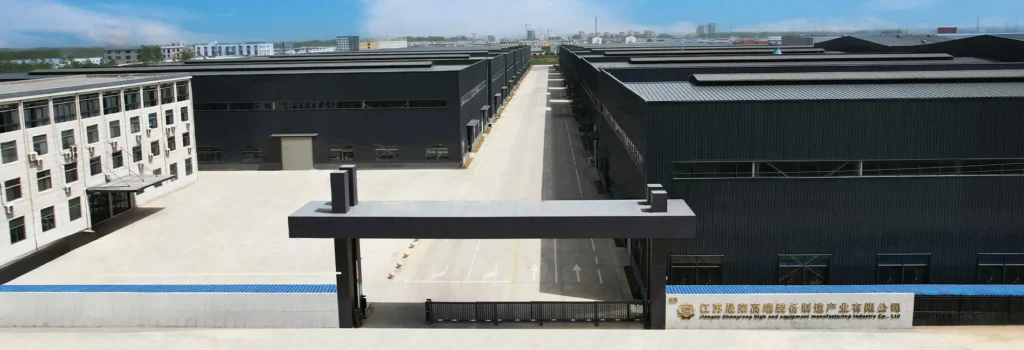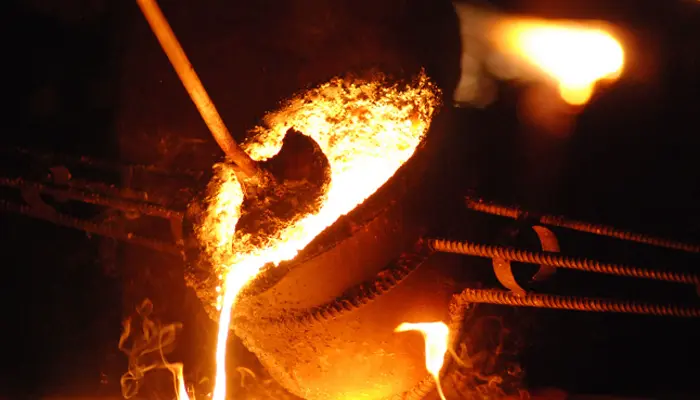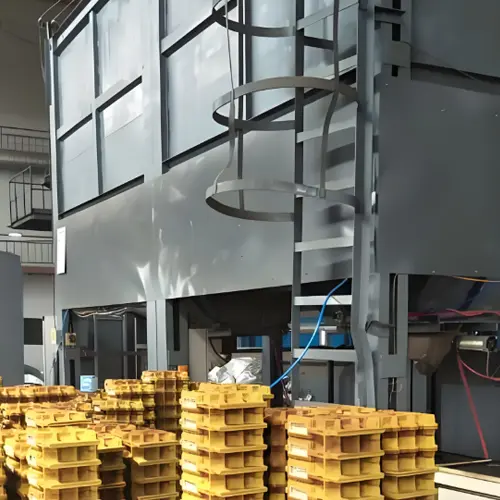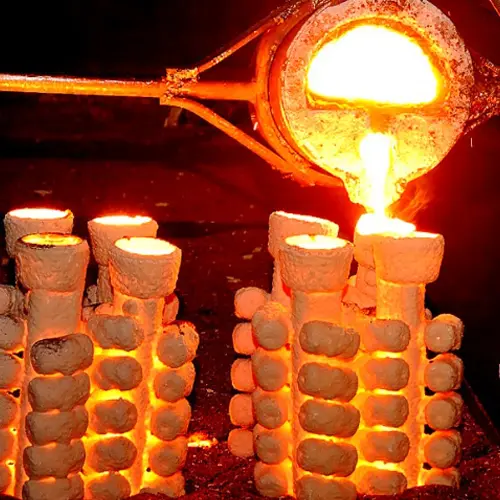The following points should be considered when choosing a suitable foundry:
1:Capacity of the foundry
Product range of the foundry
Before choosing a foundry, you should first find out the product types and casting materials of the foundry to see if they can meet the needs of customers. The main materials of castings are gray cast iron, ductile iron, steel castings, etc.
Main categories of products:Mechanical equipment castings: These castings are mainly used for various types of mechanical equipment, such as machine tools, pumps, valves, engines, etc. These castings usually need to have high strength, wear resistance and corrosion resistance to ensure the long-term stable operation of the equipment. For example, important parts such as the bed and base of the machine tool are usually made of cast iron or cast steel.Auto parts castings: Auto parts such as cylinder blocks, cylinder heads, crankshafts, etc. are all produced through casting processes. These castings not only need to meet the safety and durability of the car’s operation, but also need to pass strict quality control to meet the requirements of car manufacturers.
Building castings: Many structural parts, such as manhole covers, railings, stairs, etc., are also produced through casting processes. These castings need to have high strength and durability to cope with various adverse weather and environmental conditions.
2: Production process of foundry
Pressure casting refers to the process of injecting molten metal into the mold under the action of other external forces. Pressure casting includes pressure casting and vacuum casting, low-pressure casting, centrifugal casting, etc. of die casting machine
Metal mold casting is a modern process of hollow casting molds made of metal (heat-resistant alloy steel, ductile iron, heat-resistant cast iron, etc.). Metal molds can be cast by gravity or pressure. The metal mold mold can be used repeatedly. Each time the molten metal is poured, a casting is obtained. The service life is very long and the production efficiency is very high. The metal mold casting not only has good dimensional accuracy and smooth surface, but also has higher strength than the sand mold when pouring the same molten metal, and is less prone to damage. Therefore, when mass-producing medium and small castings of non-ferrous metals, as long as the melting point of the casting material is not too high, metal mold casting is generally preferred. However, metal mold casting also has some disadvantages: because heat-resistant alloy steel and the processing of making hollow cavities on it are relatively expensive, the cost of metal molds is not cheap, but it is much cheaper than the overall cost of die-casting molds. For small-batch production, the mold cost allocated to each product is obviously too high and generally unacceptable. Because metal molds are limited by the size of mold materials and the capacity of cavity processing equipment and casting equipment, they are also powerless for particularly large castings. Therefore, metal mold casting is rarely used in small-batch and large-piece production. In addition, although metal molds use heat-resistant alloy steel, their heat resistance is still limited. They are generally used for casting aluminum alloys, zinc alloys, and magnesium alloys. They are rarely used in copper alloy castings, and even less for ferrous metal castings.
Die casting is metal mold pressure casting performed on a die casting machine, which is the most efficient casting process. Die casting machines are divided into two categories: hot chamber die casting machines and cold chamber die casting machines. Hot chamber die casting machines have a high degree of automation, less material loss, and higher production efficiency than cold chamber die casting machines. However, due to the heat resistance of the machine parts, they can only be used for the production of castings made of low melting point materials such as zinc alloys and magnesium alloys. Aluminum alloy die castings, which are widely used today, can only be produced on cold chamber die casting machines due to their high melting points. The main feature of die casting is that the molten metal fills the cavity under high pressure and high speed, and is formed and solidified under high pressure. The disadvantage of die casting is that the molten metal inevitably entraps the air in the cavity inside the casting during the process of filling the cavity under high pressure and high speed, forming subcutaneous pores. Therefore, aluminum alloy die castings are not suitable for heat treatment, and zinc alloy die castings are not suitable for surface spraying (but can be painted). Otherwise, the pores inside the casting will expand when heated during the above treatment, causing the casting to deform or bubble. In addition, the mechanical cutting allowance of die castings should also be smaller, generally around 0.5mm, which can not only reduce the weight of the castings and reduce the amount of cutting to reduce costs, but also avoid penetrating the dense layer of the surface, exposing subcutaneous pores, and causing the workpiece to be scrapped.
Investment Casting
Lost wax casting is now called investment precision casting. It is a casting process with little or no cutting. It is an excellent process technology in the casting industry and is widely used. It is not only suitable for casting of various types and alloys, but also produces castings with higher dimensional accuracy and surface quality than other casting methods. Even complex, high-temperature resistant, and difficult-to-process castings that are difficult to cast by other casting methods can be cast by investment precision casting. The dimensional accuracy of investment castings is relatively high, generally up to CT4-6 (sand casting is CT10~13, die casting is CT5~7). Of course, due to the complex process of investment casting, there are many factors that affect the dimensional accuracy of castings, such as the shrinkage of the mold material, the deformation of the mold, the linear change of the shell during heating and cooling, the shrinkage rate of the alloy, and the deformation of the casting during solidification. Therefore, although the dimensional accuracy of ordinary investment castings is relatively high, its consistency still needs to be improved (the dimensional consistency of castings using medium and high temperature wax materials needs to be improved a lot).
The biggest advantage of investment casting is that since investment castings have very high dimensional accuracy and surface finish, mechanical processing can be reduced. Only a small amount of machining allowance is required for parts with higher requirements on the parts. Even some castings only need to leave grinding and polishing allowances, and can be used without mechanical processing. Another advantage of the investment casting method is that it can cast complex castings of various alloys, especially high-temperature alloy castings. For example, the streamlined outer contour and cooling inner cavity of the jet engine blades are almost impossible to form by mechanical processing. The production of investment casting process can not only achieve batch production and ensure the consistency of castings, but also avoid the stress concentration of residual knife marks after machining.
Lost foam casting
Lost foam casting technology (EPC or LFC) is to use foam plastic to make a solid mold with the same structure and size as the part, dip in refractory adhesive coating, dry sand molding after drying, vibrate compaction, and then pour in molten metal to make the mold evaporate and disappear due to heat, so as to obtain a casting method of metal parts with the same shape as the mold. Lost foam casting is a new technology with nearly zero excess and precise forming. It does not require the box to be assembled and the mold to be taken. It uses dry sand molding without binder, which reduces pollution and is considered to be the most likely process technology to achieve green casting in the 21st century.
Sand casting
Prepare molding sand – molding – assembly – pouring – cooling – sand dropping – cleaning – inspection – heat treatment – inspection – obtain castings
Mechanical binder core—-bonding produced by clay core sand with clay as binder;
Chemical binder core—-core sand hardens by physical and chemical reaction of its binder itself during molding and core forming, thereby building strength and firmly bonding the sand grains into a whole. Organic and inorganic binders, among which inorganic binders include sodium water glass and silica sol, while organic binders include heat-hardening, self-hardening and gas-hardening resin sand molds (cores);
Physical consolidation—-refers to the use of forces generated by physical principles to consolidate the raw sand without binder together, magnetic casting method, negative pressure molding method or real sealing molding method or film negative pressure molding method, and lost foam molding method.
Understand the equipment of the foundry
Casting equipment is an important part of the foundry, and understanding the equipment configuration of the manufacturer is an important basis for choosing a suitable foundry. Only with advanced equipment can the foundry meet the needs of customers and provide excellent services.
Understand the strength of the foundry
It is more reliable to choose a foundry with a long operating history, which means that its business is in good condition and can provide better services to customers.
Understand the market reputation of foundry manufacturers
When choosing a foundry manufacturer, you should know more about its market reputation and its reputation in the industry. This can not only reflect the strength of the manufacturer, but also reflect the customer’s satisfaction.
Understand the services of foundry manufacturers
When choosing a foundry manufacturer, you should know more about its after-sales service, such as the quality and efficiency of after-sales service.
Pre-sales service is also an important indicator for choosing a foundry manufacturer. If the quality of pre-sales service is high, it can help customers better understand the required products and improve customer satisfaction.
Foundry manufacturers are an important part of the production of castings. They can provide customers with casting design, manufacturing and surface treatment services. They are one of the important suppliers of various industrial manufacturing enterprises and structural components, especially equipment. Because the production of castings is complex and involves materials, processes, equipment, testing and other aspects, the role of foundry manufacturers cannot be ignored. The importance of foundry manufacturers lies in their ability to provide customers with high-quality castings to meet the production needs of customers. It can provide customers with casting design, manufacturing and surface treatment services to ensure that every detail can meet the requirements of customers, thereby meeting the needs of customers. In addition, it can also provide customers with comprehensive after-sales services, including installation, repair and maintenance, so as to ensure the normal operation of equipment and improve the service life of equipment. When choosing a foundry, the first thing to consider is the strength of the manufacturer, that is, whether its technical level can meet the requirements of customers. Generally speaking, a strong manufacturer will have complete equipment, an experienced technical team, and a set of mature process flows, so that it can meet the needs of customers. In addition, the service attitude of the manufacturer should also be considered to see whether it can provide good service to customers, thereby ensuring the customer’s service experience. The service provided by the foundry is very important. It can provide customers with high-quality castings to meet customer needs. When choosing a foundry, you need to consider its strength and service attitude to ensure that it can provide services to customers.





